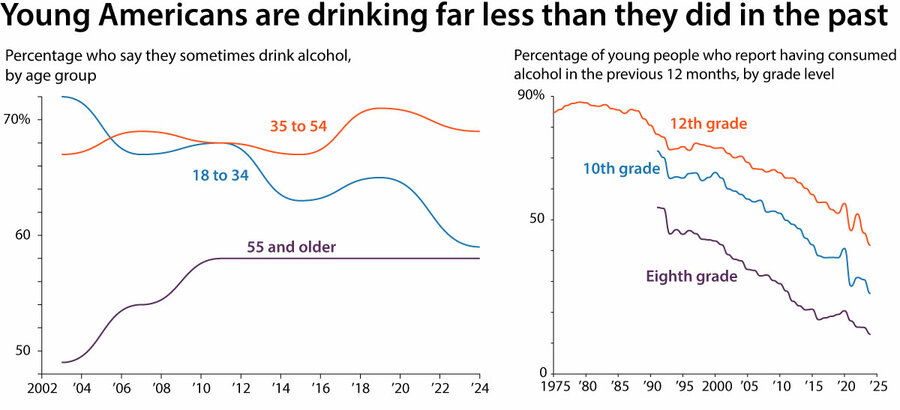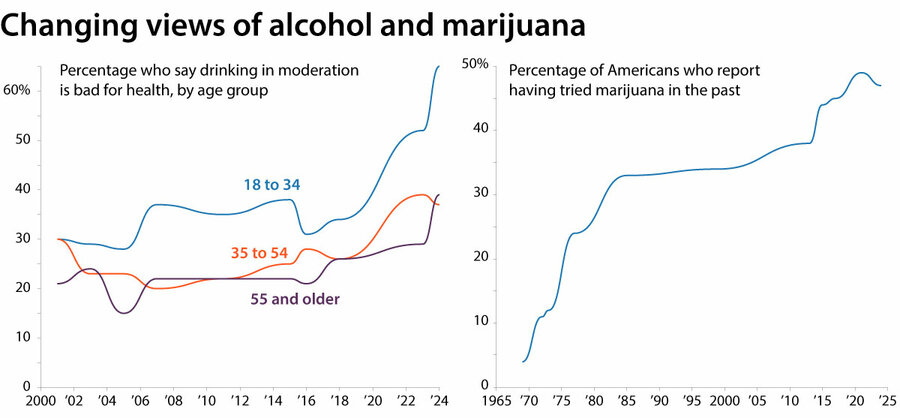If you’re a college student trying to throw a blowout, you might want to look to your grandparents for inspiration.
Conventional wisdom imagines young people, reveling in youthful energy and newfound independence, as the hardest partiers. But Generation Z and baby boomers are flipping the script.
The share of people ages 18 to 34 who say they drink fell from 73% in the early 2000s to 59% in 2024, according to Gallup. That’s the lowest youth-drinking rates have been this century. The drop, combined with an 18% increase in drinking rates among Americans over age 55 during the early 2000s, has brought the two groups’ rates of alcohol consumption nearly to parity.
Why We Wrote This
A story focused on
Alcohol appears to be losing its place as a rite of passage for Generation Z. Meanwhile, baby boomers’ drinking has jumped by double digits. What’s behind the generational switch?
Megan Brenan, a senior editor at Gallup, says younger people’s declining drinking rates seem to be an enduring trend. “It’s been a pretty steady fall,” she says. “[It’s] pretty striking, given that, you know, in the early 2000s, that was the group that were the heavy drinkers.”
Young adults increasingly shrugging at alcohol has driven drinking rates down to 58%, slightly below the historical average, even as alcohol consumption among other adults has held steady since 2010.
It’s not just college students and young adults, either. The share of eighth, 10th, and 12th grade students who drink has declined precipitously in the past several decades, according to the University of Michigan’s Monitoring the Future survey. In the same survey, high school seniors’ drinking rates halved between 1975 and 2024, falling to an all-time low of 42%.
Alcohol also seems to be falling out of favor in the court of public opinion – again, especially among younger Americans. In 2024, 65% of people ages 18 to 34 said that even moderate drinking is bad for health. That’s a 35 percentage point increase since 2001. Across all ages, a majority of Americans say that those who drink an “average” amount of alcohol should cut back.
One major caveat: Although young people are drinking less, some may be trading their cocktails and beer for other substances.
Between 2013 and 2024, the share of Americans who smoke marijuana more than doubled, Gallup found. Young adults seem the most drawn to cannabis, with some 23% of those ages 18 to 34 reported smoking it last year. Additionally, 25.8% of high school seniors said they used marijuana in the 2024 Monitoring the Future survey.
Cannabis use seems to be rising among older people as well, though it remains in the single digits. Less than 1% of people over 65 reported using cannabis in 2006. That’s grown to 8% in 2022, according to a federal survey.
Unlike alcohol, the public has come to view cannabis more favorably over time. Americans see marijuana as safer than alcohol and much safer than cigarettes, Ms. Brenan says. Last year, 68% of Americans said they supported marijuana legalization, compared with only 12% in 1969.

